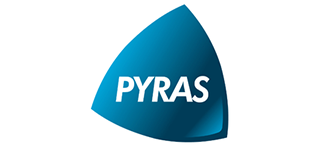Enterprises

Pyras Technology Inc.
Official Website: https://www.pyras.com.tw/

Company Description
Pyras specialize in manufacturing low-orbit satellites, offering customized services from components to system integration, covering hardware, firmware, and software. With a one-stop comprehensive process and international high-standard quality certifications, we ensure efficiency and precision. In 2024, we have launched our self-developed CubeSat, entering the new space industry and driving innovation and progress.
Company Research Topics and Matching Number
This project leverages the computational power of the high-performance payload (GPGPU) provided by the TASA to design a remote sensing data filtering pre-processing mechanism on the satellite side. It focuses on developing an intelligent filtering algorithm to address the issue of cloud cover in maritime satellite ocean color remote sensing data.
The algorithm utilizes a near-infrared band filtering approach (e.g., marking areas with near-infrared reflectance > 0.3 as cloud cover) to rapidly eliminate invalid data.
By implementing this edge computing mechanism, we can pre-filter 70% of invalid data directly on the satellite. This significantly reduces satellite communication payload bandwidth usage and accelerates remote sensing data download times, allowing more bandwidth and communication link time to be allocated for other satellite missions.
This project adopts Tableau, Plotly Dash, or other data visualization tools to develop an interactive dashboard, integrating near real-time remote sensing data from maritime satellites (chlorophyll concentration, sea surface temperature) with fishery catch statistics, providing real-time monitoring and historical trend analysis.
System Functions :
(1) Spatiotemporal Comparative Analysis - Plotting monthly average concentration changes in specific sea areas to track long-term trends.
(2) Ocean Color Anomaly Alerts - Marking areas with sudden changes in chlorophyll concentration for rapid anomaly detection.
(3) Historical Data Comparison - Comparing the current year’s data with past periods to analyze the
impact of environmental changes on fishing grounds.
System Development Goal : This system is designed for non-technical users (such as shipowners and captains), providing intuitive data visualization to help users quickly grasp fishing ground distribution trends and support decision-making, optimizing fishing operations efficiency and resource management.
This project designs a Python-based analysis framework that integrates chlorophyll concentration from maritime satellite remote sensing payloads (OCI), NOAA sea surface temperature data, and combines fishing vessel AIS trajectories and ocean meteorological data (such as ocean currents and tides) to predict fishing ground hotspots for the next 7 days.
System Functions :
(1) Multi-source data integration (maritime satellites, AIS, NOAA, ocean currents, and tide data)
(2) Fishing ground hotspot prediction (analyzing trends in fishing ground changes over the next 7 days)
(3) WEB-Based user interface (UI) (providing offshore fisheries users with query access and data visualization)
(4) Graphical report generation (automatically generating algae distribution maps and sea surface temperature variation charts)
Research Focus :
(1) Fishing ground hotspot analysis for target fish species (Pacific saury, tuna, squid, and skipjack tuna), optimizing predictions based on fish behavioral preferences to enhance fishing efficiency
(2) Optimizing data analysis models to improve prediction accuracy and reduce fisheries resource waste This system aims to leverage satellite data and machine learning technology to provide more precise fishing ground hotspot predictions, assisting offshore fishing operators in improving operational efficiency and achieving intelligent fisheries management.
This project is based on Python or C language development tools, focusing on processing satellite raw data (OCI RAW format) and integrating atmospheric correction (such as the SeaDAS module) and aquatic optical algorithms, ultimately outputting standardized chlorophyll concentration data.
System Functions :
(1) Anomaly filtering (e.g., cloud interference marking to improve data accuracy)
(2) Multispectral band calibration (ensuring cross-band consistency)
(3) Data storage and cloud management (integrating AWS S3 + PostgreSQL for data storage and queries)
Research Focus :
(1) Designing a scalable ETL (Extract, Transform, Load) process to optimize data processing efficiency
(2) Automating data processing to reduce manual intervention, improving analysis speed and accuracy
This study is dedicated to enhancing the efficiency and accuracy of ocean color remote sensing data processing, providing more effective data support for marine ecological monitoring.
School representatives participating in the company’s Enterprises

